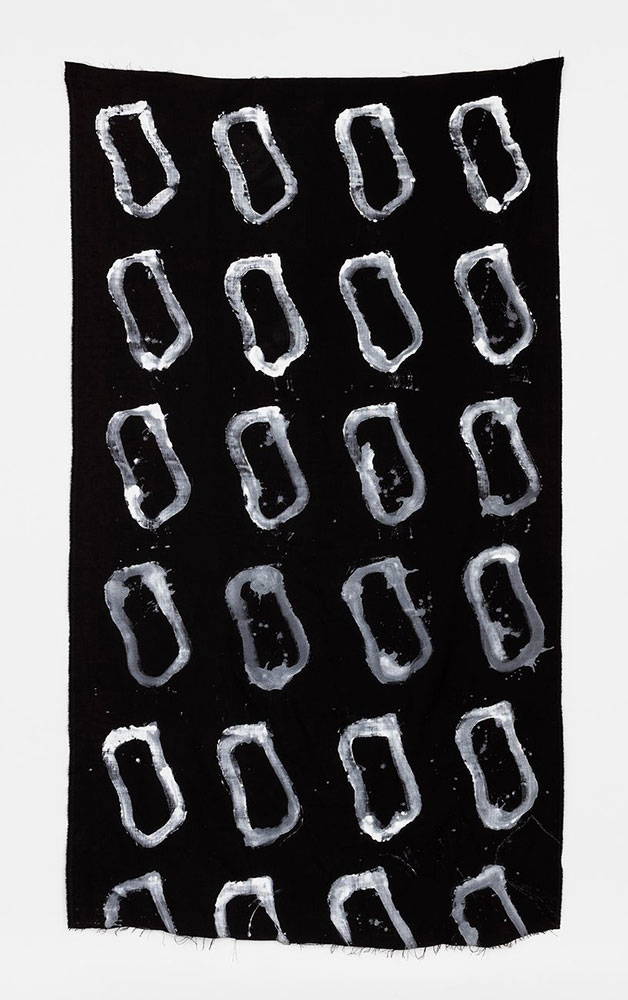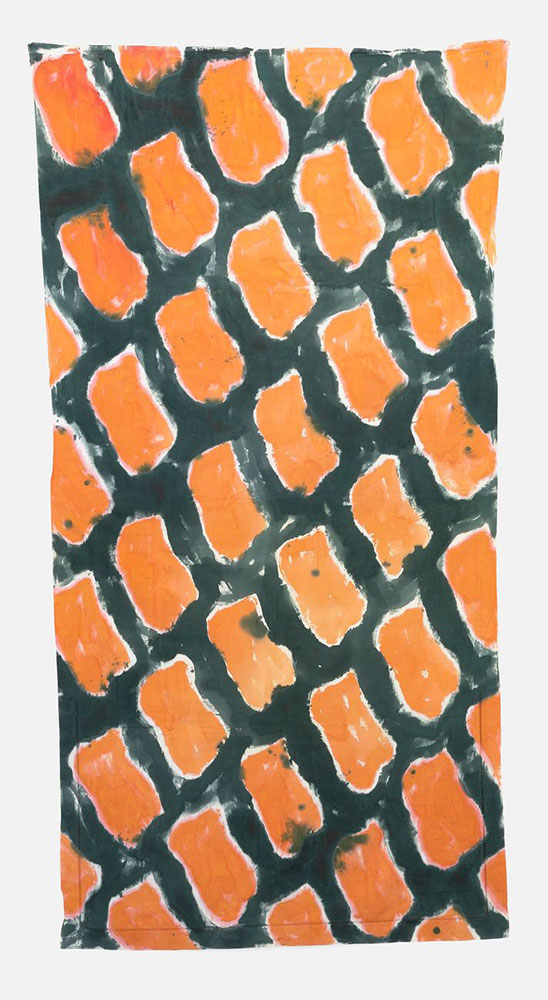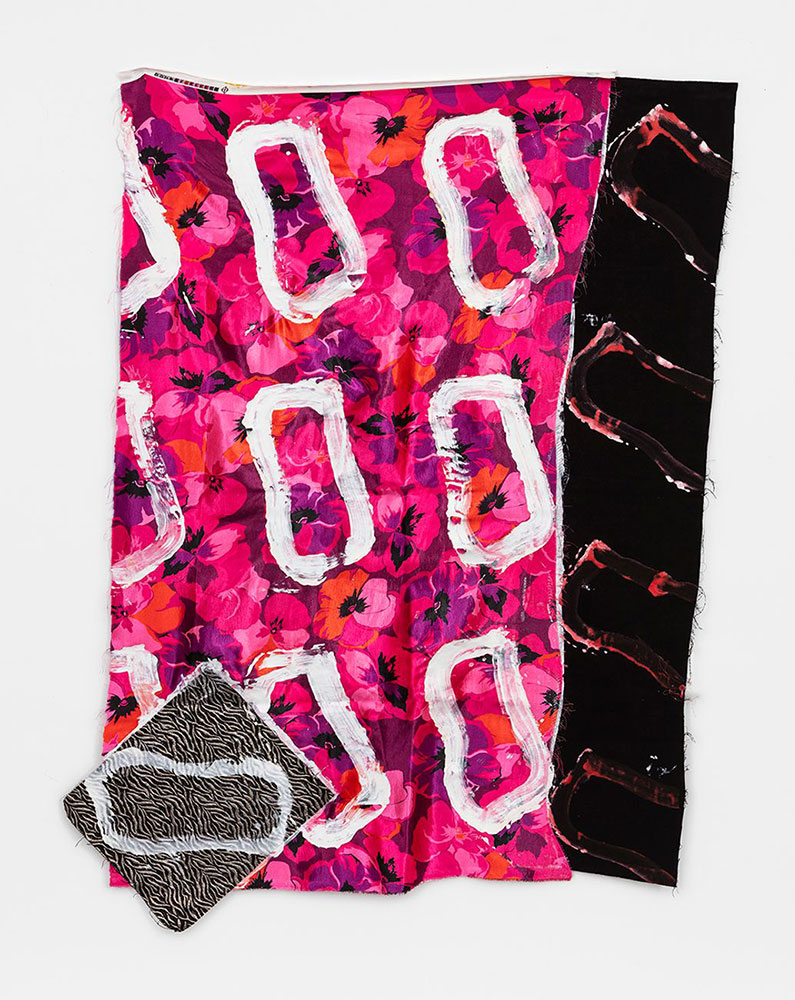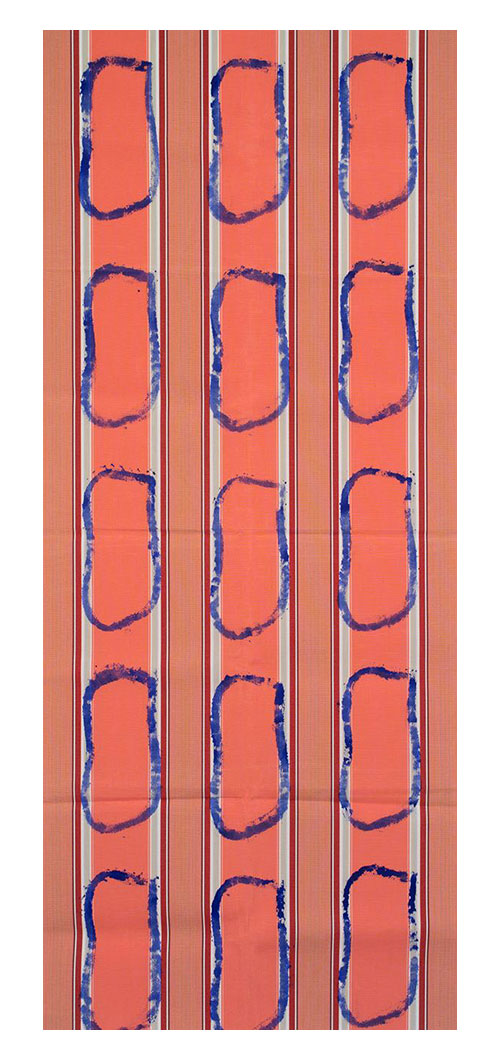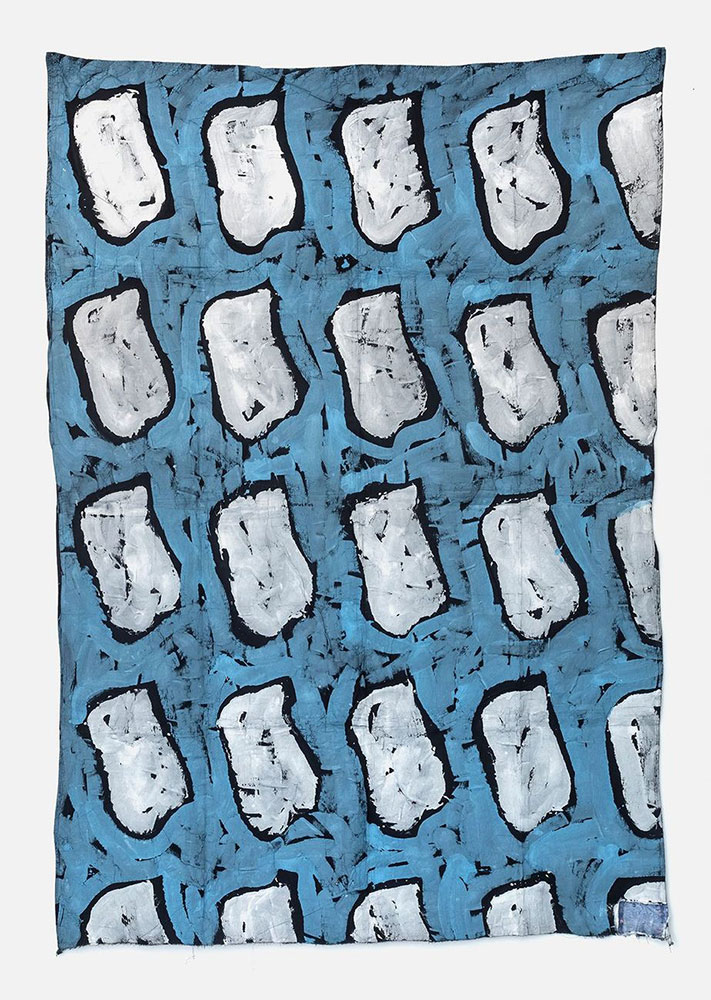ART CITIES: N.York-Claude Viallat
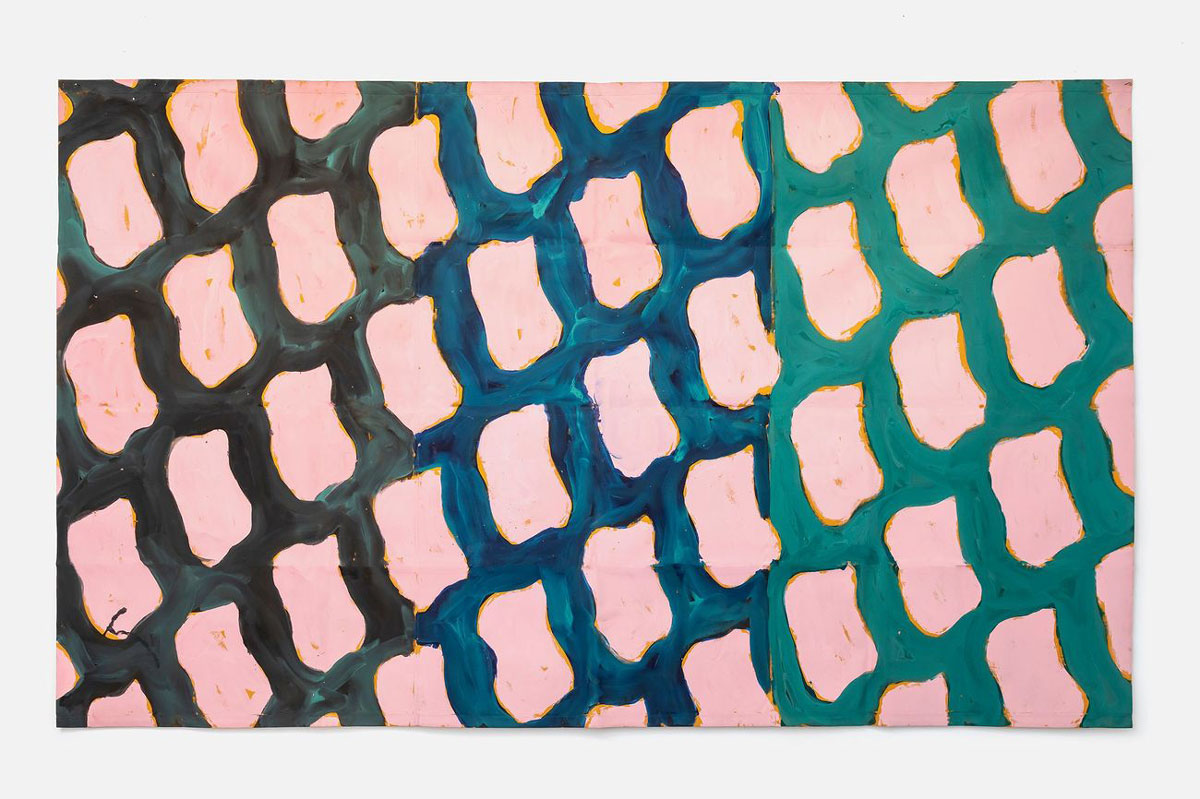 A rounded rectangle, sometimes described as resembling a bone, became Claude Viallat’s signature shape. Viallat repeated this form across various surfaces such as industrial tarps, stitched-together fabric samples, and loose hanging sheets. His vibrant paintings are awash in squiggly geometric forms and kaleidoscopic patterns, enhanced by his use of nontraditional materials. Throughout his practice, the artist united formal experimentation with bold, lively palettes.
A rounded rectangle, sometimes described as resembling a bone, became Claude Viallat’s signature shape. Viallat repeated this form across various surfaces such as industrial tarps, stitched-together fabric samples, and loose hanging sheets. His vibrant paintings are awash in squiggly geometric forms and kaleidoscopic patterns, enhanced by his use of nontraditional materials. Throughout his practice, the artist united formal experimentation with bold, lively palettes.
By Efi Michalarou
Photo: Templon Gallery Archive
A legendary figure of the last French avant-garde movement, Supports/Surfaces* that Claude Viallat co-founded in the 1970s alongside artists such as Vincent Bioules and Daniel Dezeuze, is taking over the Templon’s New York gallery with an installation of large-scale colorful tarpaulins, created between the 1970s and today. The exhibition offers a retrospective look at his practice. From the raw tarpaulins of the late 1960s to largescale compositions on printed fabric and the glued and patched canvases he has produced in recent years, the works illustrate the unprecedented creativity of an artist who has never renounced the agenda he set himself at the start of his career. A great admirer of Matisse, his art borrows from sources as varied as rock art, Native American culture and bullfighting. His work reveals a particular interest in the US art scene, as demonstrated by the discreet drips that crop up here and there on his military tarpaulins, scarves and luxury fabric offcuts, a nod to legendary abstract expressionist Jackson Pollock. His exploration of volume and space results in the resolute questioning of the status of the work of art and very purpose of its exhibition. Born in Nîmes, he grew up in Aubais, a French village with a strong bull tradition. In 1955, he joined the École des Beaux-Arts (Fine Arts School) in Montpellier. After doing his military service in Algeria from 1958 to 1961, he joined the École Nationale Supérieure des Beaux-Arts of Paris. He discovered American art in Paris, notably the works of Kenneth Noland, Morris Louis, Sam Francis, and Mark Rothko. As soon as 1963, he was attracted to abstraction. He was appointed as a teacher in the École des Arts Décoratifs of Nice in 1964 and decided to create a new formal language questioning the conventions of classical painting. He then started working systematically with one shape affixed on canvas without stretchers. His first personal exhibition took place at Nice’s Galerie A in 1966. He also participated in several collective exhibitions that year. In 1967, he was appointed as a teacher in the École des Beaux-Arts in Limoges, where he met Raoul Hausmann. In 1968, in Paris, Viallat had his first personal exhibition at the gallery led by Jean Fournier – who remained his gallerist for nearly thirty years. He then participated in an exhibition that arguably originated the “Support/Surfaces” movement at the ARC, in the Modern Art Museum of Paris. His works were in most of the exhibitions of the movement from 1969 to 1971. Although he initiated this group and influenced it aesthetically through his pictorial works, he resigned on 3/5/1971 as he disagreed with the political and theoretical orientations imposed by Louis Cane and Marc Devade. In 1972, during his first trip to the United States, he discovered Jackson Pollock’s paintings and the art of Native Americans. The same year, he participated in the “Amsterdam-Düsseldorf-Paris” exhibition at the Solomon R. Guggenheim Museum of New York, and the “Douze Ans d’Art Contemporain en France” exhibition (Twelve Years of Contemporary Art in France) at the Grand Palais in Paris. In 1973, he was appointed as an instructor at the École des Beaux-Arts of Luminy, and moved to Marseille. In 1974, the first ever Viallat exhibition in a museum was organised in Saint-Étienne’s Musée d’Art et d’Industrie, In1979, Claude Viallat became director of the École des Beaux-Arts (of Nîmes. He started collecting objects related to bulls. His collection was the starting point of the Musée des Cultures Taurines of Nîmes, opened in 1986. The Centre National d’Art et de Culture Georges Pompidou hosted a Viallat retrospective in 1982. He represented France at the Venice Biennial in 1988. The same year, he made the stained-glass windows of the Gothic Choir in Nevers Cathedral. In 1991, he became a teacher at the École Nationale Supérieure des Beaux-Arts of Paris and participated in the Supports/Surfaces historical and retrospective exhibition at the Musée d’Art Moderne of Saint-Étienne. In 2006, he was awarded with the Fine Arts Academy’s Fondation Simone et Cino del Duca prize for painting.
* Supports/Surfaces, was a radical painting movement that began in the South of France in the late-1960s, comprised a group of artists that opened works to the spaces around them by decoupling or merging painted surface and physical support. Composition entailed folding, cutting, rolling, staining, or stamping, and materials were drawn from a range of traditional and unorthodox sources. The first exhibition with the title “Supports/Surfaces” was held in 1970 at the Musée d’Art Moderne Et d’Art[9] and included Bioulès, Devade, Daniel Dezeuze, Saytour, Valensi and Claude Viallat.
Photo: Claude Viallat, Untitled N°2 (1984), 1984, Acrylic on yellow tarpaulin,200 x 325 cm, 78 3/4 x 127 15/16 inches, Courtesy Templon
Info: Templon Gallery, 293 Tenth Avenue, New York, NY, USA, Duration: 14/3-27/4/2024, Days & Hours: Tue-Sat 10:00-18:00, www.templon.com/
